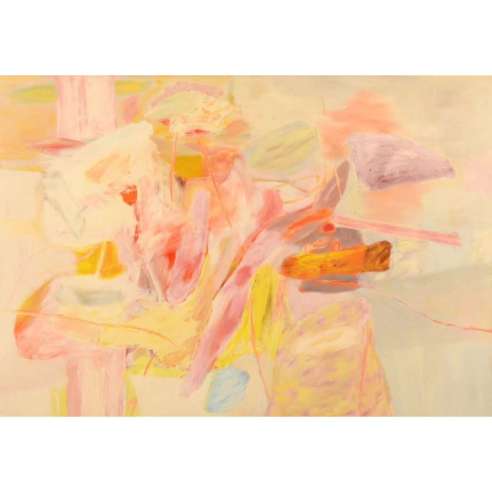This painting is a perfect example of lyrical abstraction, and a prime example of the best period of Vlerick's career.
Pierre Vlerick's work bears a certain resemblance to that of Willem de Kooning. Whereas the Dutch-born American was famous for the wild way he treated his canvas, Pierre Vlerick showed more restraint, but the making of a painting was in any case a slow process of stops, starts and revisions. His exploration is meant to result in the correct proportion of color fields and streaks, often applied layer by layer. All his colors have a luminous intensity. It was mainly Bonnard's colorful work that inspired Vlerick to compose his own singular range of colors, composed of lightly shimmering yellows, greens and oranges and a few touches of blue here and there. Abstraction is underlined by the use of color. Colors that are not associated with everyday objects often dominate the composition: purple, for example. This is the basis of his ongoing abstraction, which results in fields of color combined with organic elements depicted with the vaguest of contours.
Although both artists create very metropolitan, even worldly art, their works evoke nature. De Kooning has been called the master of the “abstract landscape”. The structure of Vlerick's works is also very vegetal and organic. Not surprisingly, he has described his paintings as “gardens”. Neither artist left his garden empty: de Kooning created a female figure, who looks like a cross between a floozy and a mother goddess. Vlerick imagined a woman enjoying her body. Vlerick's approach to abstract art is the same as de Kooning's: they refuse to paint in a figurative way, without forsaking reference to reality.
De Kooning expressed this very well in an interview, admitting that it was absurd (in the post-war period) to still paint the human figure, but asserting that it would be even more absurd not to do so. The only way out of this ambiguous dilemma is to deconstruct the human figure. Not to reject it, but to show it in all its fragility.












